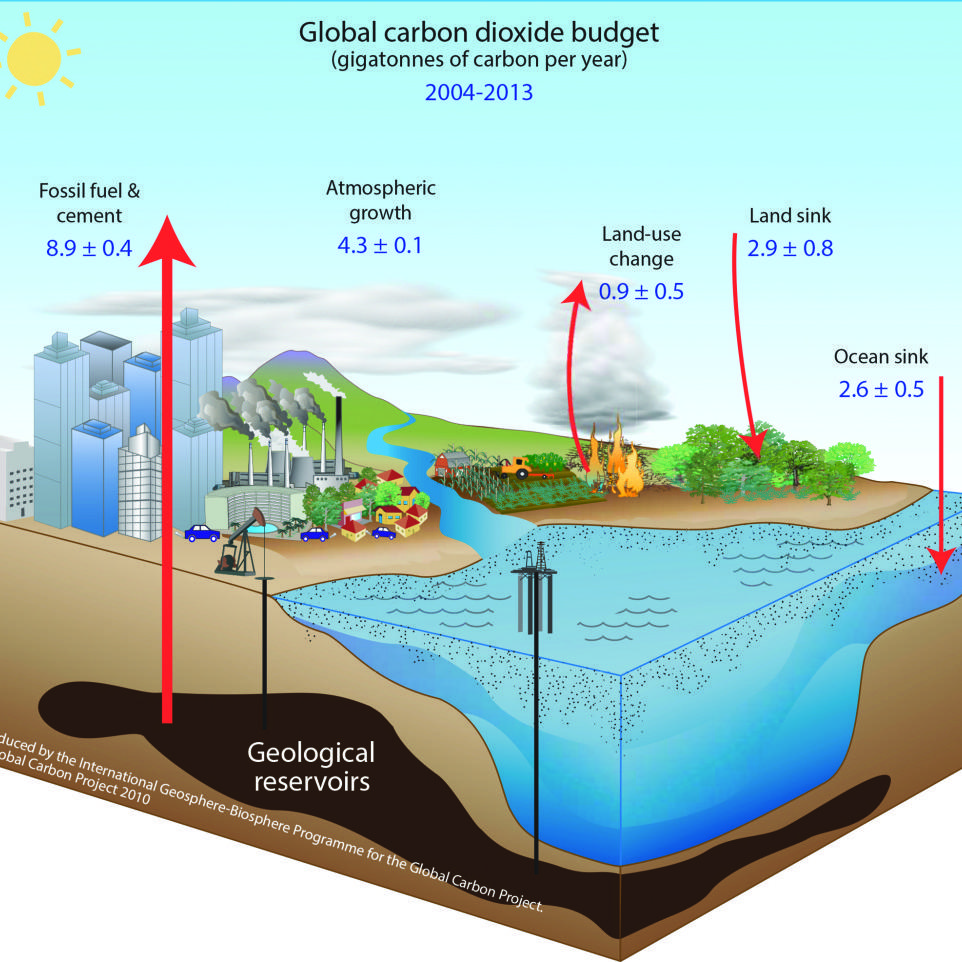Atmospheric Carbon Dioxide
Carbon dioxide (CO2) is a gas that is present in Earth’s atmosphere. It is made up of one carbon atom and two oxygen atoms. CO2 is colorless and has no odor. It is often called a “greenhouse gas.” Greenhouse gases trap heat in the atmosphere and make Earth’s surface warm. They do this by absorbing infrared light, which is radiated by Earth’s surface, and re-emitting it back to the ground. This process makes Earth’s atmosphere like a blanket around the planet, trapping heat close to the surface.
Carbon dioxide is produced when fossil fuels are burned. Burning coal, oil, or natural gas releases CO2 into the air. Fossil fuel combustion also releases other greenhouse gases, such as methane and nitrous oxide. deforestation also adds to atmospheric CO2 levels because trees absorb CO2 as they grow. When forests are cleared for farming or other development, this removal of trees reduces the amount of atmospheric CO2 being removed from the air through photosynthesis – tree growth + photosynthesis = less atmospheric CO2 . The increased levels of atmospheric CO2 contribute to climate change by trapping more heat in Earth’s atmosphere causing global temperatures to rise..
Climate change refers to a broad array of environmental degradation that is predicted to result from increasing levels of atmospheric CO2 , including alterations in precipitation; sea level changes; more frequent and intense hurricanes; droughts; floods; increases in wildfires; decreases in winter snow cover and Arctic sea ice extent; ecosystem shifts; coral reef bleaching; ocean acidification ; human health impacts, such as increased respiratory problems from poor air quality .
The effects of climate change are already being felt around the world and are projected to increase in magnitude and frequency over time unless emissions of greenhouse gases are greatly reduced… There is evidence that some types of extreme weather events have already become more frequent or intense due to climate change , such as longer wildfire seasons in North America , more intense hurricanes in parts of North Atlantic Ocean basin , earlier springs across much of Europe & North America & longer growing seasons at high northern latitudes . In addition, rising sea level s – caused by both thermal expansionof seawater & melting land ice–have begun flooding coastal areas & making storm surge s worse . Together with expected increasesin rainfall intensity , these trends are likely toput billionsof peopleat riskfrom displacementby 2050 & profound disruptionsin food production systems& clean water availability .
Despite these risks, thereare things we cando right nowto mitigateand adaptto climatechange so thatwe can builda safer future for ourselvesand for generations to come … Reducing our reliance on fossil fuelsis essentialto slowingthe rateof climatechange& limiting its eventual severity . We must shiftour energy use away from coal& oil& toward renewable sourceslike solar power& wind energy . Additionally , we need toget seriousabout conservingthe forests& ecosystems thatremoveCO₂ from theatmosphere through activities like planting trees & preventing deforestation . And finally , we MUST develop better ways tomove people & goods without emitting large amounts offossil-fuel pollutants into theatmosphere – electrifying our transportation systemswould be a great start .”


